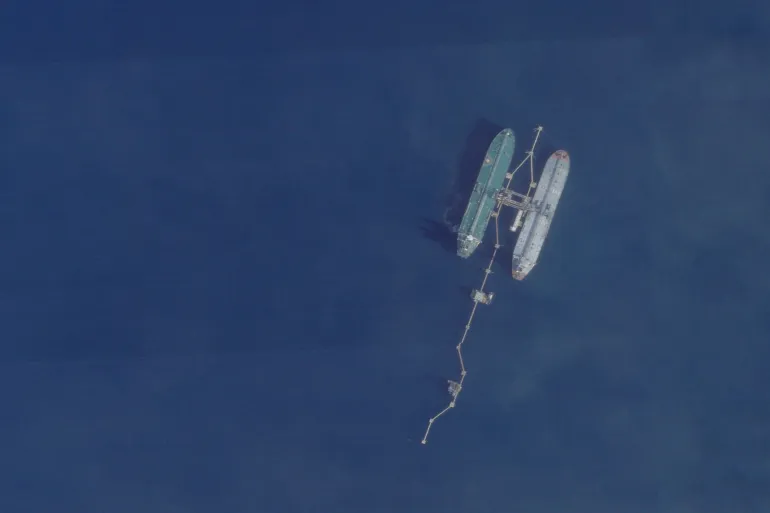Sheridan Media and Cowboy State Daily contributed to this report.
Wyoming just put real money behind something the power sector hasn’t seriously considered in a long time: expanding a coal plant.
Gov. Mark Gordon and the Wyoming Energy Authority (WEA) said Monday the state will use Energy Matching Funds approved by the Legislature to support three projects — headlined by a front-end engineering design (FEED) study for a possible second unit at Basin Electric Power Cooperative’s Dry Fork Station near Gillette. Gordon called the Dry Fork work “especially significant,” saying it could mark the first expansion of a coal-fired station in the US in many years.
Here’s the lineup: Basin Electric gets $4 million for the Dry Fork Unit 2 FEED study; Contango Resources receives $343,000 for a Big Horn Basin CO₂ pipeline feasibility study; and the University of Wyoming School of Energy Resources secures $5.5 million to beef up the Wyoming Integrated Test Center (ITC), also near Gillette.
FEED — short for Front-End Engineering Design — is the deep-dive phase before anyone turns dirt. Basin Electric’s study will sort through technology options, preliminary engineering and design, and produce an Association for the Advancement of Cost Engineering (AACE) Class 3 cost estimate. In plain English: it’s a rigorous look at whether adding a new coal-fired unit pencils out technically and financially, and what it would take to build it to meet growing regional power demand.
Basin Electric spokesperson Dana Hager said the co-op will examine modern coal-burning tech aimed at higher efficiency and lower emissions. The review is expected to run 12–16 months. Dry Fork, which came online in 2011, was built with room for a second unit, so the concept isn’t new — it’s just finally getting a serious evaluation.
For context, the US hasn’t brought a new coal plant online since Texas’ Sandy Creek Energy Station in 2013, and Wyoming’s last was Dry Fork’s first unit in 2011. That’s part of why this study is drawing outsized attention.
The WEA package isn’t just about coal generation. Contango’s Big Horn Basin CO₂ Feasibility Study will look at a pipeline concept to move carbon dioxide to key sites for enhanced oil recovery. If it proves out, backers say it could help unlock an estimated 4 billion barrels of recoverable oil while accelerating carbon capture and utilization across the region.
Meanwhile, the University of Wyoming’s $5.5 million will expand the ITC, a facility that since 2018 has hosted teams testing carbon-management technologies on real flue gas. The upgrade aims to attract more research partners, deepen workforce training, and further cement Gillette’s status as a carbon-tech hub.
Wyoming’s push fits with other in-state experiments, like PacifiCorp’s oxy-combustion testing at the Dave Johnston plant near Glenrock earlier this year — part of a broader hunt for “lower-to-zero” emissions approaches that could keep thermal generation in the mix.
Coal boosters see a narrative shift. “This is clear proof that coal is not dead,” Gordon said, framing the FEED award as a bet on innovation without abandoning Wyoming’s energy roots.
Cyrus Western — who helped set up the state’s matching-funds program in 2022 and now serves as the EPA’s regional administrator in Denver — argued the move counters years of headlines predicting coal’s demise. He pitched the potential Dry Fork addition as a showcase for modern engineering: reliable, affordable power with sharply reduced emissions, pending permits and federal reviews if the project advances.
In Gillette, the reaction was immediate.
“Absolutely wonderful,” said Rusty Bell, who leads Energy Capital Economic Development.
He pointed to possible construction and operations jobs, plus the ability to serve large new loads — from data centers to manufacturers. He said several ferroalloy companies have kicked the tires on siting in northeast Wyoming, and those are serious power users.
A FEED study doesn’t guarantee shovels, but it does set the table. If Basin Electric likes what it sees — on technology, costs, and emissions performance — then come the hard decisions: permits (including from EPA), financing, and final engineering. Still, in a decade where coal additions have been basically nonexistent, even studying a second Dry Fork unit is a notable plot twist.
For now, Wyoming is signaling it wants a future where carbon management and coal-fired reliability can coexist — and it’s willing to fund the homework to find out.








The latest news in your social feeds
Subscribe to our social media platforms to stay tuned